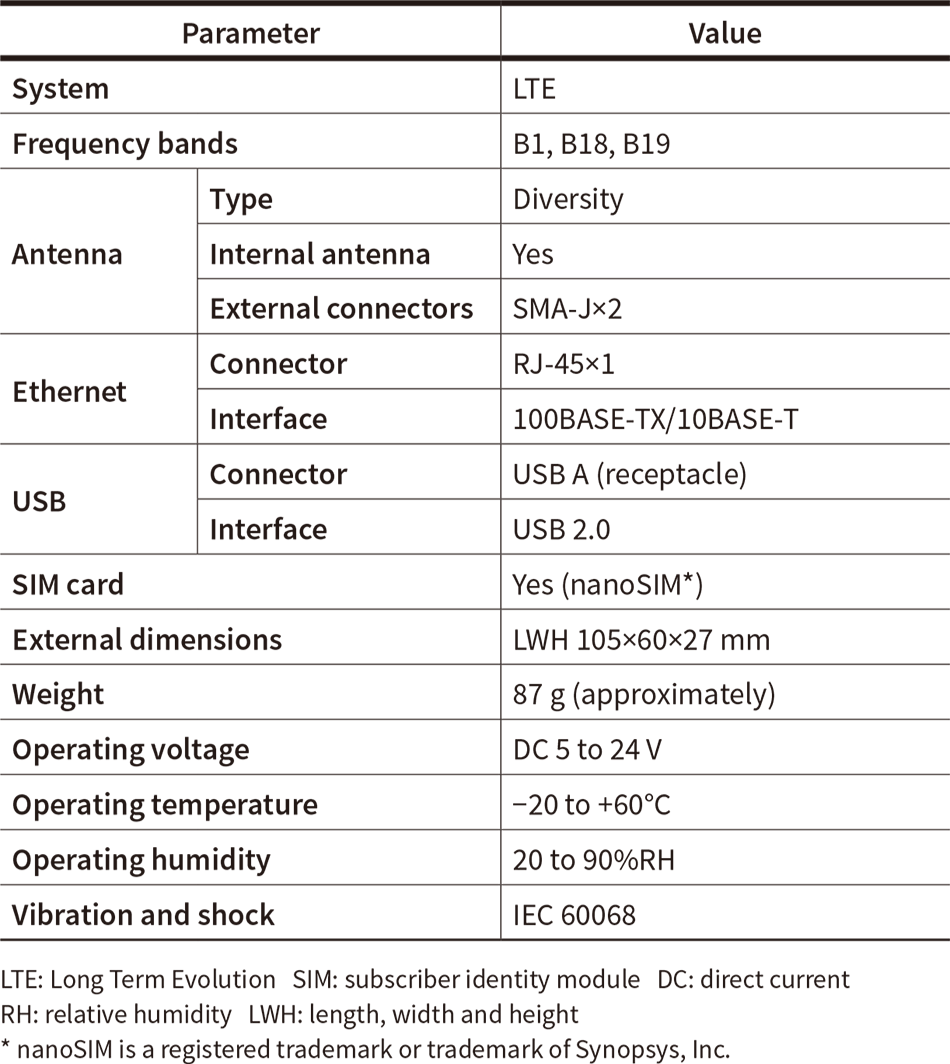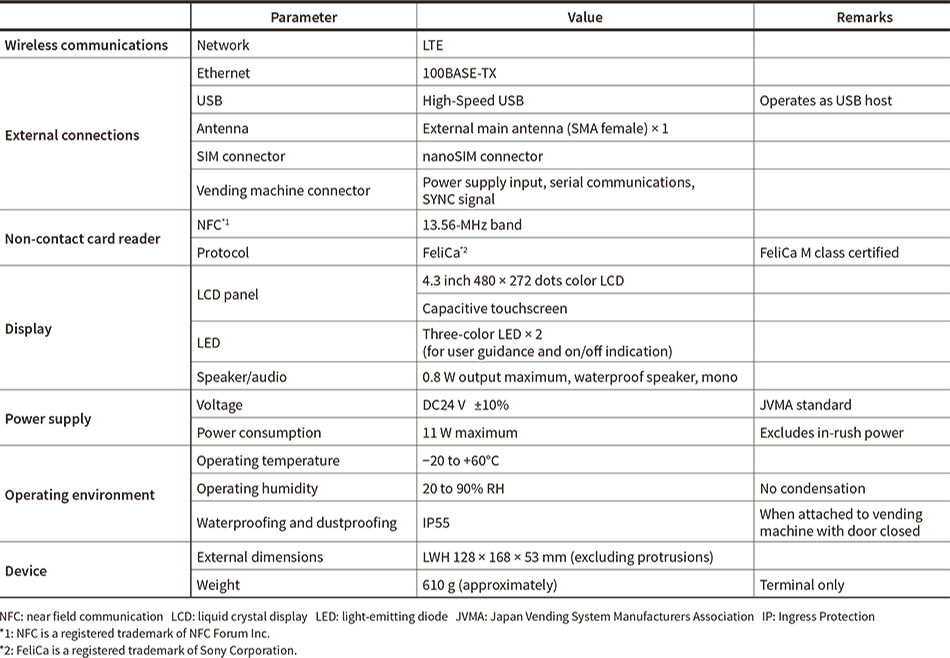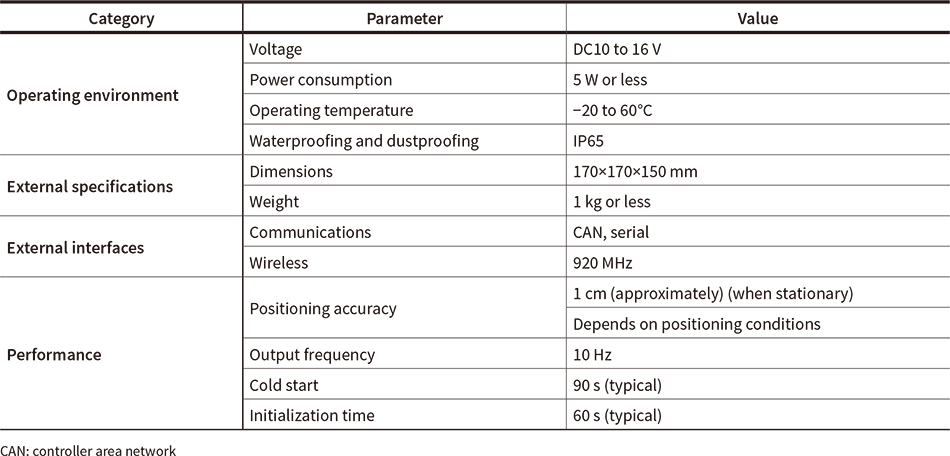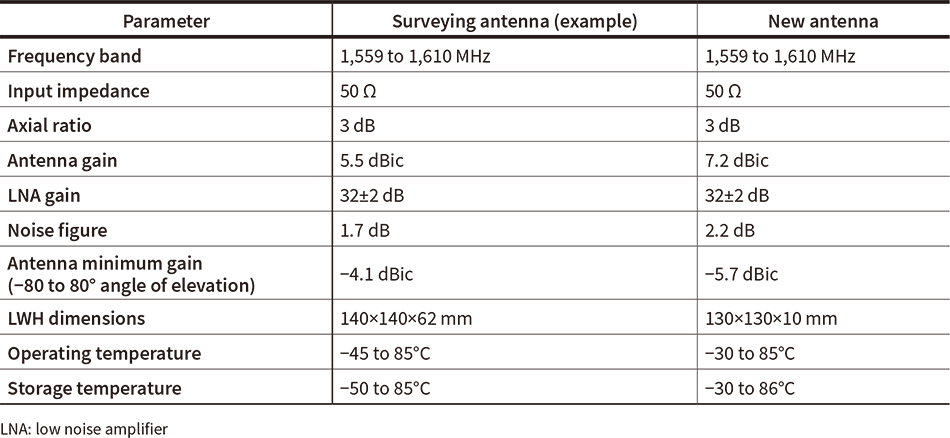Services, Systems, and Products for Smarter Factories
Recent years have seen increasing attention paid to initiatives that seek to create new value through the integration of financial services and information technology, the spread of cashless payment mechanisms being one such example. Moreover, in recognition of the labor shortages that will accompany the aging population and low birthrate, there are also rising expectations for the use of automation and driver-assistance functions on construction and agricultural machinery. Two key technologies for cashless payment and autonomous driving are respectively wireless communications and the acquisition of position information. Recognizing the affinity between these two technologies, Hitachi has chosen to proceed with the parallel rollout of its business that deals with communication devices that connect to mobile networks (mobile network interface equipment) and its positioning information system business that is based around satellite positioning. It is anticipated that both of these businesses will continue to develop in tandem with the spread of technologies such as the Internet of Things in the industrial sector. This article presents two case studies involving, respectively, cashless payment for drink vending machines and a positioning unit that can be used for autonomous driving in construction and agricultural machinery, and also considers the potential for deploying the knowledge gained from these projects more widely across the industrial sector.



Advances in network technology over recent years have raised expectations for the use of the Internet of Things (IoT) to address a variety of different societal challenges. Factories and other industrial workplaces are no exception, with potential applications seen for the IoT in a variety of areas, including labor-saving measures, productivity improvement, and skills transfer to address the shrinking workforce that will result from an aging population and low birthrate, and better energy efficiency to help overcome the energy problem. Network connectivity is a prerequisite for using the IoT, with connections able broadly to be divided into those that are wired and those that are wireless. Wired communications are generally the more reliable of the two, whereas the advantage of wireless lies in its being well suited to use over a large number of widely dispersed devices thanks to its ability to work in cars and other moving vehicles.
Another technology with the potential to help overcome societal challenges is that of autonomous mobility. While the automated driving of automobiles is a well-known example, the use of autonomous driving in applications such as construction, agricultural, and transportation machinery is also under study. As vehicles are continually changing position, determining position is often a key requirement in solutions that use vehicles. Vehicles typically rely on wireless connections to send and receive information, with vehicle position being among the information sent out. In this respect, there is a strong affinity between wireless communications and position information.
Especially in the case of wireless communications, Hitachi operates its mobile network interface equipment business and positioning system business in parallel. Mobile networks are suitable for a wide range of applications, with considerable flexibility in the number of links, communication speed, and network configuration, all of which can be specified in the contract with the public mobile phone network. To take advantage of this, Hitachi’s mobile equipment business supplies general-purpose interface equipment suited to a wide range of applications. Another advantage of mobile networks is that they are available everywhere in Japan, both indoors and out, without users having to install their own base stations, making this approach especially well-suited to devices that are operated over a wide area. Accordingly, Hitachi also develops and supplies specialist equipment designed for particular applications.
The positioning system business, meanwhile, is based around the supply of products and systems that use a global navigation satellite system (GNSS). Although GNSS can generally only be used outdoors, their coverage is extremely widespread. While there are problems with using satellite positioning on its own, including accuracy as low as several tens of meters due to the signal from the satellite being weak and subject to reflection and interference, methods are being put in place that improve this to the 10-mm range through the use of corrections and other augmentation mechanisms. Accordingly, Hitachi’s positioning system business supplies specialist products and systems that use the method or mix of methods best suited to the application.
As use of the IoT in factories and other manufacturing facilities has yet to become fully established, Hitachi’s mobile network interface equipment business and positioning system business at the present time focus mainly on fields like services, transportation, and agriculture rather than manufacturing.
This poses the question of how best to make use of the knowledge acquired from these other fields once the IoT has entered wider use in the future. The following sections present an overview of Hitachi’s mobile network interface equipment business and positioning system business together with examples of their work, and considers the outlook for the future.
Figure 1 shows the industrial wireless router multi-network wireless interface, one of Hitachi’s general-purpose communication devices. Table 1 lists its main specifications.
This and other Hitachi communication devices are equipped with functions for using both public mobile phone networks and local communications and are able to operate as a bridge between the two. In the case of the multi-network wireless interface, local communication is available via Ethernet and Universal Serial Bus (USB) interfaces and it can function as an Internet Protocol (IP) router. By using communication devices like this, equipment that would otherwise lack such connectivity can connect to the Internet via public mobile phone networks.
Fig. 1—Industrial Wireless Router Multi-network Wireless Interface This general-purpose wireless interface, which can work with multiple networks, is sold by Hitachi Industrial Equipment Systems Co., Ltd. Along with the ability to connect to public mobile phone networks, the terminal is also equipped with Ethernet and Universal Serial Bus (USB) local interfaces.
This general-purpose wireless interface, which can work with multiple networks, is sold by Hitachi Industrial Equipment Systems Co., Ltd. Along with the ability to connect to public mobile phone networks, the terminal is also equipped with Ethernet and Universal Serial Bus (USB) local interfaces.
Table 1—Industrial Wireless Router Multi-network Wireless Interface Specifications The industrial wireless router multi-network wireless interface only supports LTE networks. Being equipped with both an internal antenna and external connectors, it can switch between different communication modes. It has also been designed with operating voltage and temperature specifications that are suited to industrial applications.
The industrial wireless router multi-network wireless interface only supports LTE networks. Being equipped with both an internal antenna and external connectors, it can switch between different communication modes. It has also been designed with operating voltage and temperature specifications that are suited to industrial applications.
Table 2—Main Specifications of Electronic Payment Terminal for Drink Vending Machines Along with mobile network communications, the terminal is also equipped with a card reader for reading electronic money and other specialist hardware that includes connectors for interfacing with the vending machine. In anticipation of outdoor installation, it has also been made waterproof and dustproof when attached to the vending machine.
Along with mobile network communications, the terminal is also equipped with a card reader for reading electronic money and other specialist hardware that includes connectors for interfacing with the vending machine. In anticipation of outdoor installation, it has also been made waterproof and dustproof when attached to the vending machine.
The term “special-purpose device” refers to dedicated hardware with the ability to use public mobile phone networks that is supplied to manufacturers or service providers who utilize the IoT in their operations. This section gives the example of an electronic payment terminal for drink vending machines.
In Japan, electronic money, especially that operated by transportation providers, is a common means of payment at drink vending machines in railway stations and other such facilities. In contrast, the use of electronic money at vending machines located out on the street is still in its early stages.
High hopes are being placed on cashless payment as a new type of financial service. The convenience of paying with electronic money, in particular, is widely recognized and it is hoped that it will enter wider use. However, fast and reliable communication links are needed for paying with electronic money and this is one of the obstacles that has been slowing the wider deployment of cashless payment on drink vending machines. That is, the payment sequence needs to be completed within the prescribed length of time, this being the time between swiping the smartcard (electronic money) at the vending machine, the information arriving at the server where the actual payment is processed, and the payment result arriving back at the vending machine to inform the user that their payment has gone through. While it is possible to implement electronic payments over a slow communication link if payment information is held on the device itself, this requires that the device have sufficient storage capacity and processing performance, forcing up the price of the system. Furthermore, because the device holds the payment information for a long time, there is a relatively higher risk of the information being erased or tampered with if the device is interfered with in some way. While high-speed communications over wired connections can be provided in controlled environments such as railway stations, trying to equip vending machines located on the street with such high-speed access has proved difficult.
To get around this, providers of electronic money payment services began to take interest in the fourth-generation (4G) mobile telecommunications that started to become available around 2010 in the form of the Long Term Evolution (LTE) standard. One of the features of LTE is the high speed of communications it provides compared to the older third-generation (3G) technology. While initial use of LTE was mainly in personal devices such as cell phones and smartphones, it has also come to be used for machine-to-machine (M2M) communications in recent years. This was the background to Hitachi supplying an electronic payment terminal for drink vending machines to providers of electronic money payment services. Table 2 lists the terminal’s main specifications.
Drink vending machines are typically equipped with ports for attaching external devices together with interfaces for communicating with these attached devices. The payment terminal supplied by Hitachi features a non-contact smartcard reader for reading the electronic money and is designed to be compatible with these ports and interface. This means it is possible to retrofit a vending machine with an electronic money capability, lowering the barriers to service providers extending their electronic money payment services to beverage companies.
While there were approximately 2.4 million drink vending machines in Japan as of the end of 2018(1), most are not yet equipped to accept payment with electronic money. It is hoped that this new electronic money payment terminal will lead to greater cashless use of drink vending machines in the future.
Fig. 2—RTK-GNSS System Block Diagram A key feature of RTK-GNSS is its use of terrestrial base stations. The positioning unit augments the signal from the satellites with correction information received from base stations.
A key feature of RTK-GNSS is its use of terrestrial base stations. The positioning unit augments the signal from the satellites with correction information received from base stations.
Table 3—Main Specifications of RTK-GNSS Positioning Unit Designed for use on construction and agricultural machinery that operates outside, the RTK-GNSS positioning unit features a wide operating temperature range together with waterproofing and dustproofing. It also has a CAN interface, a commonly used standard on such machines.
Designed for use on construction and agricultural machinery that operates outside, the RTK-GNSS positioning unit features a wide operating temperature range together with waterproofing and dustproofing. It also has a CAN interface, a commonly used standard on such machines.
Table 4—Comparison of RTK-GNSS Antennas The new antenna is smaller than the surveying antenna, being approximately one-seventh the size by volume. Despite this, although its noise figure and minimum gain are slightly poorer, the new antenna performs at a roughly similar level to the surveying antenna, sufficient for use in RTK-GNSS positioning units.
The new antenna is smaller than the surveying antenna, being approximately one-seventh the size by volume. Despite this, although its noise figure and minimum gain are slightly poorer, the new antenna performs at a roughly similar level to the surveying antenna, sufficient for use in RTK-GNSS positioning units.
Mechanization and automation provide a way to cope with the shrinking workforce, a consequence of the aging population and low birthrate among other factors. While machines have already replaced human labor for many tasks, this in most cases is done using stationary machines. The hope for the future is to also achieve automation using machines that are able to move from place to place.
Whether it be humans or machines, position information is important for movement. Movement has a destination, and a moving object cannot determine how to act if it does not know its position relative to its destination.
The Global Positioning System (GPS) and other forms of satellite positioning are widely recognized as a way of obtaining this information. The technology is already fitted to many automobiles and other types of machinery and a wide variety of services are available, making use of the ability for positioning to be used throughout the world and its availability in products such as cell phones or smartphones thanks to the necessary hardware having been made smaller in recent years.
While the GPS system uses US satellites, other nations have also taken the strategic step of putting satellite positioning infrastructure in place over recent years. GNSS is now able to use all of this infrastructure. The large number of satellites available for use by GNSS means that they provide greater accuracy than would be possible using GPS satellites only, and as a consequence are becoming more widely used in applications such as surveying.
On the other hand, because satellite positioning works by using the weak radio signals received from artificial satellites, comparatively large errors can arise even when using GNSS due to factors such as the location of the satellites or signal interference and reflection. These errors can be as much as several tens of meters or more, making it unsuitable for use in some applications.
One method that has been devised to overcome this problem is called real-time kinematic GNSS (RTK-GNSS), which improves accuracy and reliability by augmenting the satellite signals with corrections received from terrestrial base stations. It is claimed that RTK-GNSS can routinely provide positioning to an accuracy of around 10 mm(2). Figure 2 shows a diagram of RTK-GNSS.
Because RTK-GNSS relies on terrestrial base stations, it can only be used in locations that can receive information from a base station. This means the system is only suitable for positioning in a limited range of locations.
Autonomous driving is a classic example of machine automation that involves movement. While most interest is focused on the autonomous driving of automobiles, there are also high hopes for using the technology in construction and agricultural machinery. The range of movement of these latter machines is restricted, to the construction site in the case of construction machinery and to the field being worked in the case of agricultural machines. This makes these machines good candidates for using RTK-GNSS to obtain the accurate position information needed for autonomous driving. Recognizing this fact, Hitachi has been selling, since 2016, a positioning unit for mobile machinery that uses RTK-GNSS. Table 3 lists the main specifications of this device.
Positioning units for construction and agricultural machinery need to be made small and one of the challenges during development was the antenna used in the unit. Because RTK-GNSS at that time was mainly used in surveying, the antennas were designed for high sensitivity and tended to be large. This made them unsuitable for use in Hitachi’s positioning unit. Instead, Hitachi developed its own antenna specifically for the unit. Table 4 lists comparative details of the newly developed antenna and the RTK-GNSS antenna for surveying that was commercially available at the time.
The new antenna was only one-seventh the volume of the surveying antenna while still retaining comparable characteristics in terms of gain and other such parameters. This allowed the unit to be made small enough for installation in vehicles such as construction and agricultural machinery.
Along with its small size, the design features of the unit include waterproofing and dustproofing and a wide operating temperature range. This, too, facilitates installation in construction and agricultural machines that are used in harsh environments, opening up the possibility for use in the autonomous driving of these vehicles.
This article has presented an overview of Hitachi’s mobile network interface equipment business and positioning system business, with a payment terminal for drink vending machines providing an example of the former and an RTK-GNSS positioning unit for vehicles providing an example of the latter.
The processing units that handle mobile communications and satellite positioning in these devices are being implemented as separate modules. Use of these modules as components in systems that use communications or positioning will simplify their development.
On the other hand, the supply of specialist equipment that is tailored for specific uses such as those described in this article requires development work based on an in-depth understanding of these applications. Examples include the port and communication interface used to install the payment terminal in vending machines and the special-purpose antenna for the RTK-GNSS positioning unit.
The importance of understanding the application also applies when using a general-purpose communications device. Customers purchase such communications devices with a particular purpose in mind. This makes it vital when supplying such devices to ensure that they are used appropriately and with a suitable means of configuration, and that required services such as the communication link are fit for the purpose.
Both of the examples in this article use the same technology that is used for connectivity in factories and other manufacturing facilities, and Hitachi intends to utilize this more widely in the future. Based on the knowledge acquired to date, Hitachi also intends to work actively to develop this business in applications where there is a need to provide network connectivity via public mobile phone networks or where positioning systems play a key role in a solution.